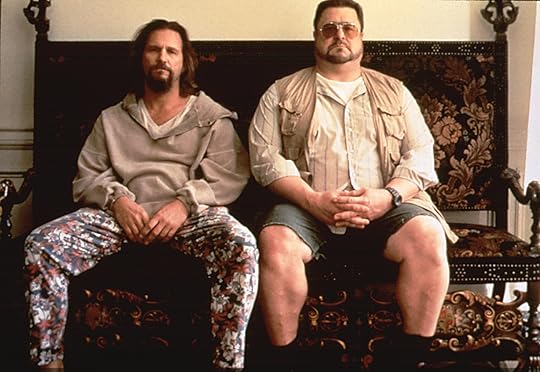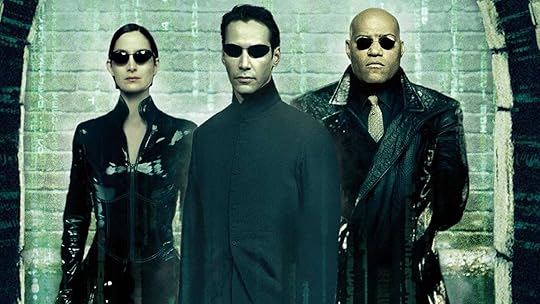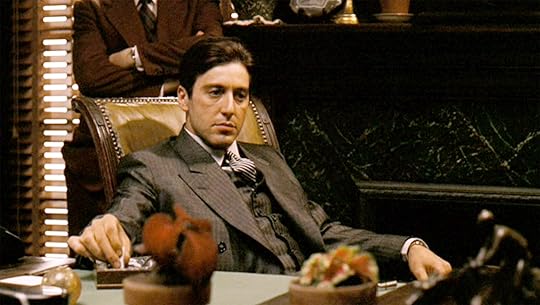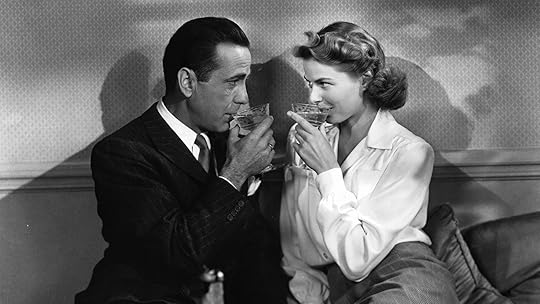The Art of Writing Believable Dialogue.
Alright, let’s get real. I dove into writing headfirst because I was absolutely smitten with Aaron Sorkin’s dialogue. The way he weaves words was like watching a symphony in motion—I just knew if I worked my butt off, I might someday capture that same rhythm and flow.
But boy, was I in for a surprise! It turns out, writing killer dialogue isn’t just about channeling your inner Sorkin; it’s about having the full trifecta of a script nailed down—Concept, Character, and Structure. Sorkin knew this well, and that’s why his dialogue packs such a punch!
Dialogue is the lifeblood of storytelling. It’s the heartbeat that brings characters to life, propels the plot, and reveals hidden truths about the world they inhabit. But crafting dialogue that rings true? That’s one of the toughest challenges a writer can face.
The difference between dialogue that pulls you into the story and dialogue that yanks you out is all in the details.

#1 – Understand Your Characters’ Voices.
Think of your characters’ voices as their personal symphonies. Each has its unique rhythm and tune, shaped by their life experiences, background, and personality.
If you nail their voice, you create dialogue that’s as authentic as it is engaging.
Key Aspects to Consider:
Vocabulary and Diction: A scholar will speak differently than a street artist. Choose words that reflect their education and status.Rhythm and Pacing: Fast talkers contrast sharply with those who take their time.Tone and Attitude: Is your character sarcastic, earnest, or cynical? Their tone will tell you more about them than just their words.Cultural and Regional Influences: Accents, idioms, and local slang can add authenticity and color.In The Big Lebowski, The Dude’s (Jeff Bridges) laid-back, stoner dialogue is effortlessly unique.
Take his line, “Yeah, well, you know, that’s just, like, your opinion, man.” His casual, almost apathetic tone perfectly mirrors his easy-going personality, contrasting vividly with the more intense Walter Sobchak (John Goodman)
 #2 – Avoid Exposition Dumps.
#2 – Avoid Exposition Dumps.
Picture this: you’re at a dinner party, and instead of lively conversation, someone launches into a lecture about the history of cheese. Yawn, right?
That’s what an exposition dump feels like in dialogue. People don’t chat in lengthy monologues.
They reveal details gradually and naturally.
Strategies to Dodge Exposition Dumps:
Show, Don’t Tell: Let actions speak louder than long-winded explanations.Use Subtext: Hint at the details rather than spelling them out.Break Up Information: Spread exposition across scenes to avoid overwhelming your audience.Keep it Relevant: Make sure information naturally fits into the conversation.In The Matrix, rather than a lengthy explanation about the Matrix, we get intriguing snippets.
When Morpheus (Laurence Fishburne) cryptically says, “The Matrix is everywhere. It is all around us,” it piques curiosity and drops just enough info to keep us hooked.

#3 – Use Subtext.
Subtext is like the secret sauce of dialogue. It’s what’s simmering beneath the surface—the unsaid truths, hidden emotions, and underlying conflicts.
Effective subtext adds layers to your dialogue, making it richer and more engaging.
Strategies for Crafting Subtext:
Contradiction Between Words and Actions: Let actions betray hidden truths.Implication Through Context: The situation can suggest meanings beyond words.Ambiguity and Double Meanings: Leave room for interpretation.Non-verbal Cues: Body language and pauses can speak volumes.In The Godfather, Michael Corleone’s (Al Pacino) interaction with his wife, Kay (Diane Keaton), is steeped in subtext. When Michael tells her, “Don’t ask me about my business, Kay,” it’s clear he’s hiding something. Their unspoken understanding and tension add depth to their relationship.
[image error]
#4 – Embrace Silence and Pauses.
Silence isn’t just the absence of sound—it’s a powerful dialogue tool.
Pauses can reveal hesitation, build tension, and hint at unspoken emotions. Embracing these quiet moments can make your dialogue feel more authentic and charged.
Strategies for Using Silence:
Build Tension: A pause before a big reveal heightens suspense.Convey Internal Conflict: Silence can indicate a character’s inner turmoil.Suggest Unspoken Feelings: Let silence hint at what’s left unsaid.Create Realism: Incorporate pauses to mirror natural speech rhythms.In No Country for Old Men, Anton Chigurh’s (Javier Bardem) scenes are dripping with tension. His confrontational moments are punctuated by long, ominous pauses that amplify the fear and suspense. The silence before he speaks and during his coin flip adds layers of menace.

#5 – Make Dialogue Serve Multiple Purposes.
Good dialogue doesn’t just chat—it multitasks. It advances the plot, reveals character traits, develops relationships, and sets the tone.
This way, each line does heavy lifting and enriches the story.
Strategies for Multi-Purpose Dialogue:
Advance the Plot: Introduce new information or create conflict.Reveal Character: Show who your characters are through their dialogue.Develop Relationships: Use dialogue to illustrate relationship dynamics.Set the Tone: Reflect the story’s mood and themes through speech.In The Social Network, the deposition scene is a masterclass in dialogue. The dialogue goes like this:
Lawyer: “Mr. Zuckerberg, do I have your full attention?”
Mark Zuckerberg: “No.”
Lawyer: “Do you think I deserve it?”
Mark Zuckerberg: “What?“
Lawyer: “Do you think I deserve your full attention?“
Mark Zuckerberg: “I think if your clients want to sit on my shoulders and call themselves tall, they have a right to try it—but there’s no requirement that I enjoy sitting here listening to people lie. You have part of my attention—you have the minimum amount.”
Mark Zuckerberg’s (Jesse Eisenberg) sharp responses reveal his arrogance, advance the plot by highlighting tensions, and underscore themes of power and betrayal. It’s a prime example of how dialogue can do much more than just relay information.
 #6 – Keep it Concise and Impactful.
#6 – Keep it Concise and Impactful.
Less is often more in dialogue.
Strive for brevity and punchiness to keep conversations engaging and impactful.
Every line should pack a punch, avoiding fluff and focusing on what truly matters.
Strategies for Concise Dialogue:
Eliminate Redundancies: Trim unnecessary words.Focus on Subtext: Hint at deeper meanings without explicit statements.
Use Strong Verbs and Nouns: Choose vivid, specific language.Create Memorable Lines: Craft lines that resonate.
In Casablanca, Rick Blaine’s (Humphrey Bogart) line, “Here’s looking at you, kid,” is a masterclass in conciseness. It’s short, emotionally loaded, and captures the depth of his feelings without extra words.
It’s a perfect example of how less can indeed be more.

#7 – Stay True to the Themes.
Dialogue should mimic real speech with natural interruptions, hesitations, and informal language, but without getting bogged down in excess.
The trick is to capture the essence of real conversation without cluttering it.
Strategies for Authentic Speech Patterns:
Incorporate Natural Interruptions: Reflect real conversation flow.Use Hesitations and Fillers Sparingly: Add realism without overloading.Capture Unique Speech Quirks: Include personal speech traits.Maintain Clarity and Purpose: Ensure dialogue serves its function.In Lady Bird, the dialogue is refreshingly real. Take Lady Bird’s (Saoirse Ronan) conversation with her mother (Laurie Metcalf) about being “artistic” which goes like this:
Lady Bird: “I think it’s really important to have an artistic family.”
Marion: “An artistic family? What are you talking about?”
Lady Bird: “You know, like an artist family. Like, where everyone is… I don’t know, an artist.”
Marion: “We’re not artists. We’re working-class.”
Lady Bird: “Yeah, but that doesn’t mean we can’t be… I don’t know… artistic.”
The natural hesitations and informal language reflect their personal dynamics and make the conversation feel genuine and relatable.
In Conclusion – Writing believable dialogue is a blend of art and skill. It demands a deep understanding of your characters, a keen ear for natural speech, and the ability to convey meaning through subtlety and precision.
By studying how dialogue shines in films and books, you can hone your craft, ensuring that your characters’ voices resonate with authenticity and impact. So go on, let those words dance and sparkle—just like Sorkin would!
Now it’s YOUR turn – What are your favorite examples of well-written dialogue in movies or books?
Would love to get your input in the comment box below.
The post The Art of Writing Believable Dialogue. appeared first on Vered Neta.



